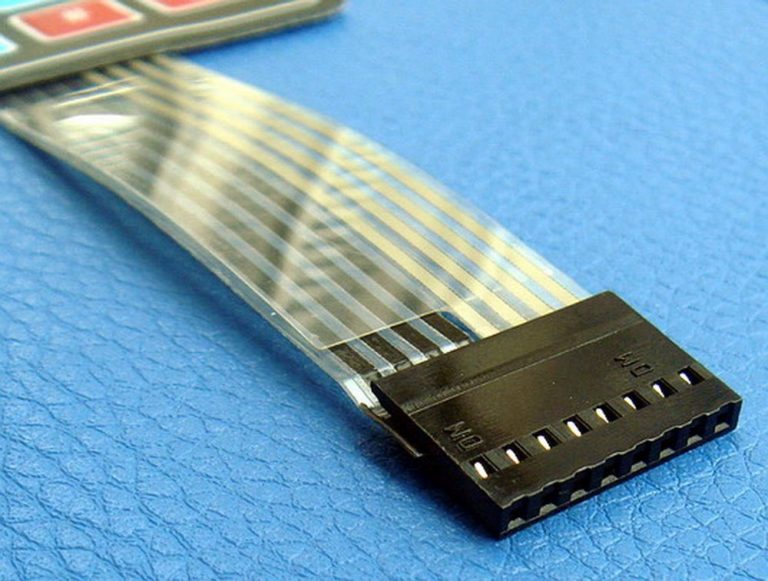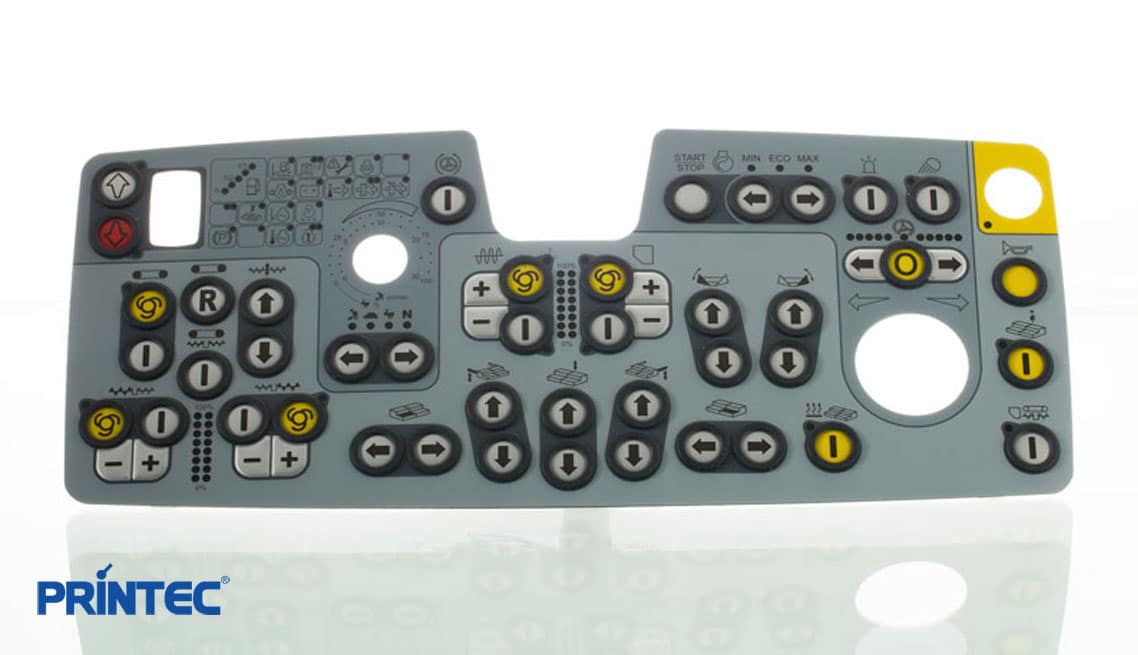Projects requiring precision should always involve a qualified membrane switch manufacturer from the start.
Projects requiring precision should always involve a qualified membrane switch manufacturer from the start.
Blog Article
Everything About Membrane Layer Switch Over: Understanding Its Design and Capability
When you consider the control interfaces in modern gadgets, membrane buttons usually come to mind. These components are extra than simply buttons; they blend layout and performance perfectly. Recognizing how they function and what makes them efficient can transform your perspective on daily electronics. There are subtleties to their style and efficiency that you could not be mindful of. Allow's explore what sets membrane layer switches over in addition to various other control systems.
What Are Membrane Layer Switches?

Membrane buttons can likewise be customized pertaining to form, dimension, and graphics, enabling producers to produce one-of-a-kind interfaces customized to particular products. On the whole, membrane switches play a considerable function in enhancing customer experience throughout a broad array of applications.
How Membrane Layer Switches Work
When you push a key on a membrane switch, it turns on a simple yet effective mechanism. The top layer, typically made of versatile product, lowers onto a conductive layer under it. This action bridges the space between conductive traces, finishing an electric circuit. As quickly as the circuit shuts, it sends a signal to the tool's controller, which translates your input.
You'll discover that the tactile feedback differs based upon the button design, offering either a soft click or an extra noticable feedback. Once you launch the key, the membrane returns to its initial placement, resuming the circuit and stopping the signal. This process occurs virtually immediately, making certain a receptive individual experience.
Membrane switches are preferred due to their longevity and resistance to dirt and wetness, making them ideal for various applications, from family home appliances to clinical devices. Comprehending this operation aids you value their extensive usage.
Trick Elements of Membrane Buttons
Understanding the key parts of membrane buttons is basic for grasping their performance and layout. The safety layer shields against environmental elements and use, prolonging the button's lifespan. By understanding these elements, you'll gain understanding into just how membrane layer switches operate and their value in different applications.
Materials Used in Membrane Change Design
The performance and toughness of membrane layer switches greatly depend upon the materials used in their design. You usually run into polyester and polycarbonate as main substrates as a result of their exceptional toughness and versatility. These products withstand scrapes and chemicals, making them optimal for requiring settings.
The conductive layers frequently make use of silver or carbon, picked for their dependability and conductivity. membrane switch manufacturer. Silver gives remarkable efficiency, while carbon is an economical option. For the overlay, you may take into consideration a matte or shiny surface, depending on your aesthetic demands and individual experience
Make specific to pick adhesives that withstand environmental aspects like temperature level and humidity. Selecting the appropriate products will guarantee your membrane layer switch stands the examination of time.
Style Factors To Consider for Membrane Buttons
While creating membrane layer buttons, it's important to take right into account different factors that influence their capability and individual experience. Begin by concentrating on the design and button dimension; make certain they're user-friendly and easy to navigate.
Validate your style suits ecological variables, like dampness or temperature level variants, which can influence efficiency. By carefully taking into consideration these components, you'll create a membrane button that boosts usability and complete satisfaction.
Applications of Membrane Layer Switches
Membrane switches are flexible parts found in various applications, from industrial equipment to customer electronics. You'll see their impact in makers that require durable interfaces and in tools that benefit from smooth layouts. Comprehending these applications helps you appreciate the functionality and usefulness of membrane layer switches in daily innovation.
Industrial Equipment Use
When you're looking to improve the performance of industrial equipment, membrane switches supply a reputable service that combines longevity with easy to use style. These buttons are ideal for severe environments, providing resistance to dust, moisture, and chemicals. You'll locate them in control panels for making makers, cooling and heating systems, and clinical devices, where precision and responsiveness are important. Their low profile implies they fit effortlessly into various devices, saving useful room while maintaining simplicity of usage. With adjustable graphics and backlighting choices, you can produce an user-friendly interface for drivers, boosting performance and safety. Plus, their lengthy life-span minimizes maintenance prices, making them a clever financial investment for your commercial applications. Embrace membrane layer buttons to enhance your procedures and enhance general efficiency.
Consumer Electronic Devices Assimilation
In the domain of consumer electronic devices, membrane buttons play a necessary function in enhancing individual interaction and device functionality. You'll discover them in gadgets like microwaves, remote controls, check my source and video gaming consoles, offering a seamless means to interact with modern technology. Their streamlined style permits simple integration right into numerous products, making controls instinctive and easy to use. With their capability to integrate graphics and backlighting, you can delight in a modern aesthetic that complements the device's general appearance. Membrane buttons also assure longevity and resistance to dust and wetness, expanding the lifespan of your electronic devices. By picking membrane layer buttons, you enhance not just the capability but also the design of your tools, making daily communications smooth and pleasurable.
Benefits and Disadvantages of Membrane Buttons
While membrane buttons offer an array of advantages, they likewise feature some drawbacks that you should think about. One considerable advantage is their compact design, making them optimal for space-constrained applications. They're likewise economical, giving a durable option with a low production price. Additionally, their seamless surface is very easy to tidy, boosting health in environments like health centers.

Nevertheless, there are drawbacks. Membrane layer switches can have a much shorter lifespan compared to mechanical buttons, especially under hefty use. They can additionally be less tactile, which could affect user responses throughout procedure. If harmed, fixing them can be difficult and frequently calls for total substitute. Ultimately, their level of sensitivity to severe temperatures and ecological read the full info here conditions may limit their efficiency in particular settings. Stabilizing these benefits and drawbacks will aid you identify if membrane layer switches are the best suitable for your project.
Often Asked Inquiries
Just How Lengthy Do Membrane Layer Switches Commonly Last?
Membrane see this site changes normally last between 5 to ten years, relying on use and environmental problems. You'll wish to assess factors like wear, exposure to dampness, and temperature level fluctuations to gauge their longevity efficiently.
Can Membrane Switches Over Be Custom-made for Specific Layouts?
Yes, you can personalize membrane layer switches to fit specific styles (membrane switch manufacturer). You'll have the freedom to choose shades, shapes, and formats that match your job's demands, ensuring they mix perfectly with your total aesthetic
What Is the Expense Variety for Membrane Layer Switch Over Manufacturing?
The cost array for membrane button manufacturing commonly drops between $1 and $10 each, depending upon elements like style intricacy, amount, and materials. You can obtain quotes from makers to discover the most effective option.

Are Membrane Layer Switches Water-proof or Immune?
Membrane layer buttons can be designed to be water resistant or immune, relying on products made use of and building and construction methods. If you require them for wet settings, ensure you define those needs during the layout process.
Exactly How Do Membrane Layer Switches Over Compare to Standard Switches?
Membrane buttons are usually thinner and extra flexible than standard switches, providing a sleek design. They're often much easier to clean up and integrate, however may not supply the responsive responses you're made use of to with mechanical alternatives.
Verdict

Report this page